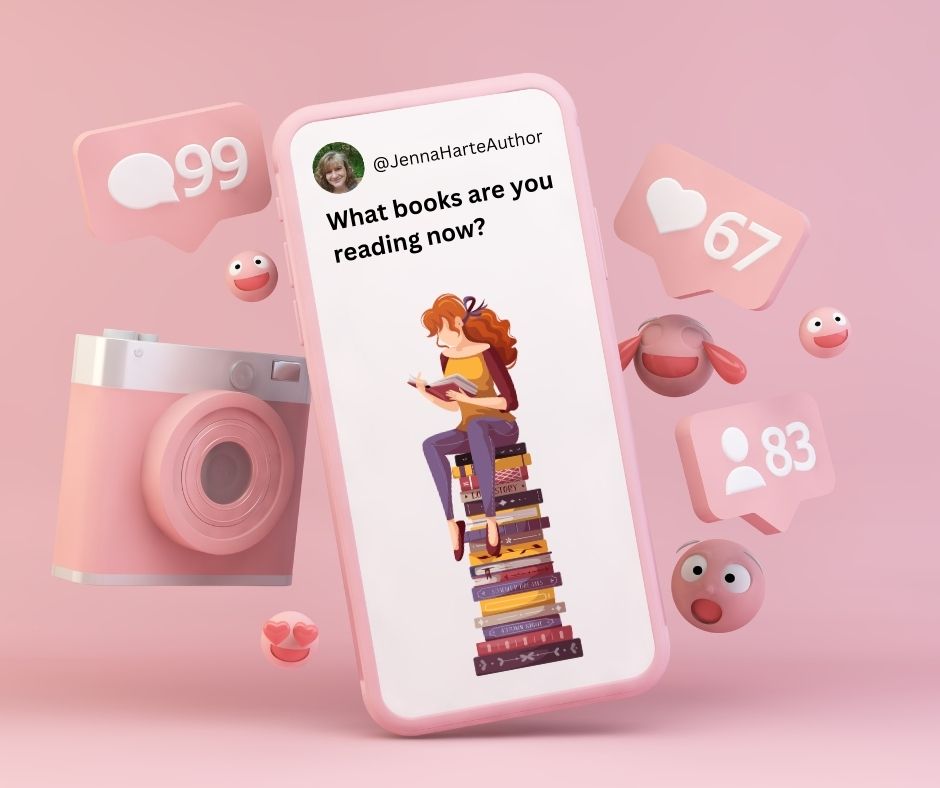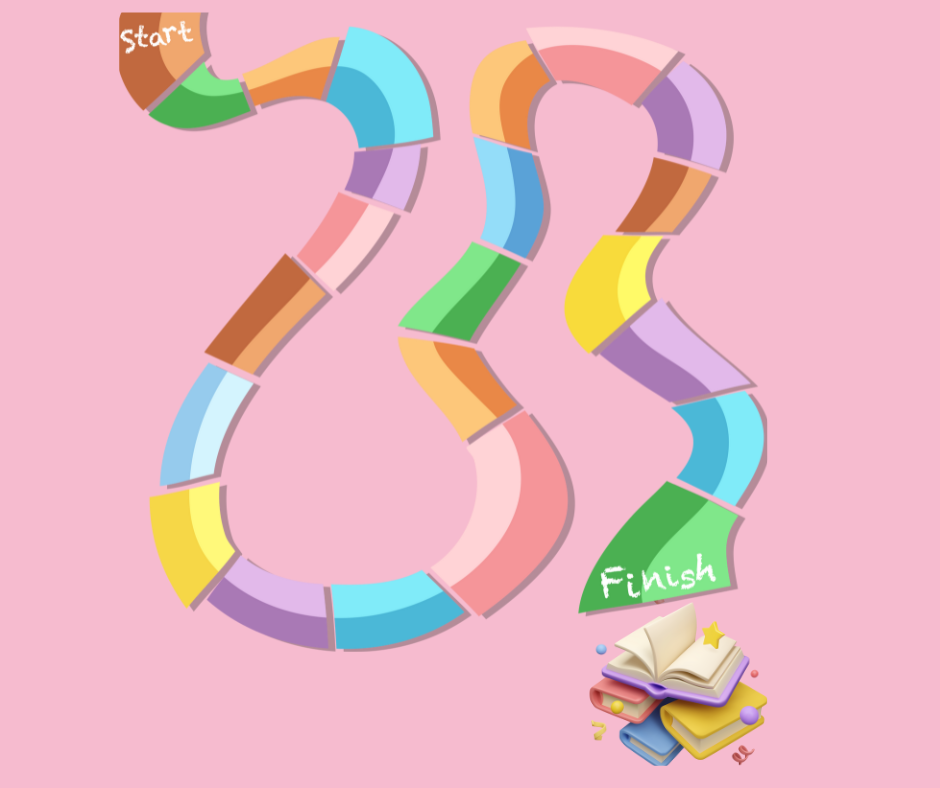Best Social Media Tips for Romance Authors

I don’t know about you, but one of my biggest challenges as a romance author is keeping up on social media. Facebook author page. Facebook group. Twitter/X. Tiktok. Pinterest. Instagram. YouTube. Plus, some platforms, such as Facebook and Instagram, have multiple content types (posts, stories, reels, live, etc).
Many authors I talk to find social media not just challenging, but also a chore. When that happens, and social posts are done simply because you feel you need to post something, you’re not going to have results. Yes, you can hire someone to help you, but your social media will attract more readers and sell more books the more it reflects who you are and the more you participate.
The question is, how can you do that without spending more time creating and posting content than you do writing?
Here are some tips and strategies that might help you develop a social media plan.
Social Media Tips for Romance Authors
1. Pick two or three social platforms that your readers use and you feel you can commit to.
If your goal is to gain greater exposure for your books and/or build a community around your books, then you need to pick the platforms that your readers use to talk about the types of books you write.
FACEBOOK
Facebook is usually a good bet if you have older (millennial and older readers). With over a billion people, a significant number of them romance readers, it’s a place to be where they can easily find you.
Facebook Author Page: A Facebook author page can be a resource to share your books, but you’ll want to mix it up with other content that attracts your reader. This can include teasers, behind-the-scenes pictures, micro-blog content, what you’re reading, and more. Extra tip: Invite people to like your page once they engage. Facebook will let you know about this and even suggest that you invite them to like you.
Facebook Reader group: Managing a reader group is a great way to build a community around you and your books. Readers love to engage with authors they enjoy, and this is a great place to do it. You can give them advanced peeks, behind-the-scenes glimpses, exclusive content, and, of course, they can talk to you.
Other Reader Groups: Facebook is filled with genre-based groups, even within subcategories of romance. Do you write paranormal romance? There are hundreds of paranormal romance book groups. The same is true for dark romance, sweet romance, and more. Just use the search option to find groups in your book’s category. Be sure to read the rules as some will have rules around if and/or when you can post your own books. Some have author takeover events. Others have one day a week in which authors can share their books.
Facebook Live: This can be a great way to connect with your reader group or livestream bits of events you’re at.
INSTAGRAM
The challenge I’ve had with Instagram is figuring out what content to post on the various features; feed, stories, reels, IGTV.
Feed (square photos): I see many authors using the feed (square pictures) to post pictures of their cats while they’re writing, memes, and more. You can also have books and teasers.
Stories: Stories came about in response to Snapchat. These are spontaneous, less edited moments in time, that disappear (unless saved) in 24 hours. Some authors use stories to show unboxing of their books or their cats sitting on their keyboard.
Reels: Reels is Instagram’s answer to TikkTok. They are short entertaining videos. The big difference between reels and stories is that reels will show up on your feed, whereas stories don’t.
Hashtags are key to being found, so it helps to have 10 or 20 on hand to use related to reading, books, and your genre.
To be honest, I’m working on my author Instagram, wanting to clean up my feed and do more reels. To get ideas, follow authors in your romance subgenre.
TIKTOK
I’ll be honest in that I’m not quite sure what to do about TikTok. Yes, TikTok readers have exploded the careers of romance authors. With that said, there’s a growing question about if TikTok will remain in the U.S., and of course, the time it takes to create TikTok’s that will help you build your readership. Author Kate Hall swears by TikTok skyrocketing her book sales, and she created a course (TikTok for Authors– course information lower on the page) that does a good job explaining how TikTok works (including understanding the algorithm, which is different than other social media), as well as creating “hooks” that attract readers.
Following Booktok hashtag can give you a good idea of the most popular books on the platform. If your readers are there, maybe it’s time to learn about Tiktok for authors. Follow authors in your romance subgenre to get ideas on what to post. Consider starting by participating in popular trends to get seen and grow your following.
Tip: You can download your TikTok videos and post them on Instagram Reels. Or make the raw video on your phone (as opposed to the TikTok app), and post it both to TikTok and Reels. Or create videos without your face using Canva. I create videos now for TikTok, Reels, and Shorts in Canva, and use Social Bee to schedule them.
Like Instagram, hashtags help you get found.
YOUTUBE
YouTube isn’t always on the list when you think of social media, but its BookTube community has done a great deal to help sell books. Further, it’s Shorts (YouTube’s response to TikTok and Reels) is another place to promote yourself and your books on one of the largest platforms in use.
YouTube also has a social aspect beyond video comments in the Community Tab. Here you can post content the same as you post to Facebook, including text, images, videos, and gifs. You can post quizzes and polls too.
TWITTER/X
I’ll be honest in that I never loved Twitter. I couldn’t figure out how to best use it. Then it just got to be a tough place to be, so I closed down my account.
With that said, many authors have found Twitter/X helpful as agents and editors use the resource to share tips or ask for submissions. However, I’m not sure it’s a place where romance readers hang out to learn about books.
Like the other platforms, you want to create posts that go beyond “buy my book” to being someone romance readers want to follow.
Hashtags are used on Twitter, but not to the extent of the other platforms. Two or three are generally recommended and, of course, need to fit into your character count. You can take advantage of book and writing hashtags such as #1LineWednesday where you share one line from your current #WIP (work in progress).
I don’t know many authors that use Pinterest in the author marketing, but I know many who use it to store pictures based on characters, settings, and items in their stories, plus other research. Your research and book mood boards are something that could be fun to share with reader through other social media. For example, I’ve used Pinterest boards to share interesting tidbits about my books to my reader groups. Here’s a lingerie board I made for Tess Madison Valentine for my Valentine mystery books. Tess loves couture lingerie and ultimately ends up buying a lingerie boutique.
GOODREADS
It seems like Goodreads is a no-brainer when it comes to a social platform for authors because it’s designed for readers. But I’ve struggled to use it to my full advantage. For one, the site is still clunky and overwhelming. It’s been a surprise to me that Amazon hasn’t done more to make it easier to use.
With that said, many authors use Goodreads to great success. It is a place readers use, including TikTok and YouTube book influencers.
It’s different from other social media in that you’re not posting your lunch updates. There is an Ask The Author feature that you can use to answer reader questions and you can feed your blog’s RSS onto your profile. Mostly it’s a place where readers can find and review books, organize their books (want to read, reading, etc), and join discussion groups to talk about books.
In an odd turn, Amazon books often have Goodreads ratings on book pages along with Amazon’s rating. Weirder still is that Goodreads ratings are often lower than Amazon ratings and many authors feel Goodreads reviewers are more critical. However, many authors, myself included, have found they have more reviews/ratings on Goodreads than other sites, including Amazon.
Alessandra Torre used to have a free Goodreads webinar, but I can’t find it. You might check her website in case she offers it again. She does have a few articles on Goodreads as well.
Another good place to check is this article by Dave Chesson: The Ultimate Guide to Goodreads
👉Remember, you don’t need to use all the social platforms I’ve just listed. All you need to do is pick 2 or 3 your readers use, and do them well.
2. Consider your goals with social media.
Don’t post to social media willy nilly. Thinking, “oh, I need to post something…here how about my cat” doesn’t work. Each time you post content, have an end result you want in mind. Some goals are:
- Building awareness of you and your books
- Engage with readers
- Sell books
- Grow a fan base
- Grow email list
I think it’s important to consider the reader journey when deciding what you’ll post where. Readers start out not knowing who you are. Then they hear of you and decide to know more about you. When they know you (and like you), they join you, and after they join you, they become a fan.
Your marketing needs to take all that into account. For example, social media isn’t that great at attracting readers who don’t know you (except for ads). Instead, social media is best at introducing yourself to readers once they’ve heard about you, and cultivating a relationship in which you ask them to join your reader group or email list. Here’s a sample reader journey:
- You are interviewed on a blog post that has your website and social links. Readers like the interview and check out your website and click on social links.
- Through social following, readers learn more about you and gain more interest in your books. They join your email list group. They add your books to Goodreads.
- They get to know you and love your books, so they join your reader community and street team. (This could be run on social media, or you can have an exclusive group that includes more perks and possibly more income through Ream or Patreon).
Social media fits best in 2 and 3; helping readers get to know you and become your fans. But to do that, you need to post content that attracts them to you and your books. On social media, you achieve this by thinking about what you want people to do when they see your post (engage for fun, follow, join email, etc). One way to ensure you’re executing your goals is by having a call-to-action. That can be: Click here for learn more about X book or Tell me your favorite book this year or Grab X book for 99c while it’s available, etc.
I’ve liked Author Social Media Assistant for days I don’t know what to post. Each month they have 30 new social posts that are funny, quote, ask a question, a meme, or a book promo (you can put your book cover in the post). Plus you have access to previous month’s posts. There’s a post for every day, but I usually go in whenever I’m not sure what I want to post and look around until I find one that I think will be fun for my readers.
3. Decide on 3-5 categories you’re going to post content about.
Content needs to be more than “buy my book” or “sign up for my email.” It’s easier to have ideas about what to post, if you develop categories for your content. Examples of categories include:
- Writer life
- Behind the Scenes
- Romance memes, quotes, etc
- Your pet
- Inspiration
- Promotions (i.e. discounts, freebies, etc)
- Your books (not just “buy my book” but, teasers, excerpts, videos, cover reveals, etc).
- Share fan art or fan-oriented call-outs
- Photos or videos of things related to your books such as location, food, etc.
- Your passions or causes (be careful with things that might be divisive. Certainly, you can post whatever you want, but many authors who have posted their political or social views have lost some readers.)
4. Make a list of a few types of content to post regularly.
What you post will depend on the platforms you choose to use. Ideas include:
- Share other content you have, such as blog post, podcast interviews, or videos
- Repurpose other content you have, such as a blog post, podcast interviews, or videos. There are many AI tools that can turn your podcast into a video (Headliner), or long-form video into shorter videos for TikTok, Reels, and Shorts. Or you can use an app to turn text into video (Booktok AI– converts your book to TikTok Slides, Pictory, Lumen). You can download a TikTok video and share on Reels.
- Post excerpts or teasers from your book. You can use graphics or video. Canva is a great way to do this with slides for video, video teasers, or square graphics.
- Pictures of things that inspire you
- Memes. Canva has a meme generator. Or you can use imgflip.
- Ask your fans/followers for help, such as naming characters or towns
- Pictures of items included in your books, such as locations, fashion, food, etc.
- Share what you’ve been reading. I ask my followers what they’re reading as well.
- Personal stuff (within reason)
- Behind the scenes, such as your office pet, your desk, etc
- Ask readers questions (Today I asked my readers what books they’ve read more than once)
- Quotes from your books
- Promote your lead magnet to build your email list
- Sell your books (within reason)
- Post your reviews
- Go live sharing behind the scenes, book info, etc.
Remember, you don’t need to do it all. Start small and then expand as you develop systems for creating and posting social content.
5. Batch create your content.
Another challenge of social media is the time to create the content. Setting time aside time each week to create and schedule your content fixes the issue of not knowing what to post and wasting too much time each day on social media.
There might be content that you don’t create at your specified creation time, but you can plan and schedule the creation. For example, if you’re going somewhere next week that you can share on social media, put it in your calendar so you remember to snap the photo/video and share. A few years ago, when I flew to San Francisco, I made a note to take a picture of our plane landing (you get low over the water in the bay at SFO). I used it in a post about a character of mine who doesn’t like to fly.
I like Canva for batch-creating content. It’s easy to use with lots of great customization features, even under the free account (I have the pro account). Plus you can make videos and memes. You can even schedule posts through Canva, or some social schedulers, such as Social Bee, have a Canva integration.
6. Use a social media tool that allows you to schedule and repost evergreen content.
Many social tools allow you to schedule posts, but not all will reschedule content for reposting. I use Social Bee bought through a deal at AppSumo. It’s not there anymore, unfortunately, but it’s still affordable for what you get, such as 5 profiles (including direct posting to Instagram and TikTok), the ability to schedule your content on various platforms at one time while still offering variations for each type of post, post recycling (repost evergreen content), hashtag and emojis, and more.
You can create different categories of content and determine when each type of content is posted on each platform (or let Social Bee do it for you). It has a Canva integration so you can create a Canva graphic right from Social Bee or pull in your Canva graphic from Social Bee (instead of downloading and uploading). Social Bee offers a free trial if you’d like to try it out.
Other social posting tools you can research include:
- Hootsuite
- Buffer
- TweetDeck
- Social Oomph
- Social Queue (I believe this has recycling posts as well)
- MeetEdgar
When it comes to scheduling, mix up your content buckets and goals so you have a variety posted and don’t annoy your followers with too much of the same thing. Consider having theme days (i.e. Teaser Tuesday) or using day-based hastags (i.e. #1linewednesday).
7. Study your analytics.
While you want to see growth, even more, you want engagement. If you’re posting on a platform and no one is taking notice, you need to change your posts or perhaps drop that platform and use another.
Your data can also tell you what is most popular. But also look at your results. Are you meeting your goals (awareness, engagement, sales, fans)?
The Authors Social Media and Community Building Planner
You have a book to sell! The Author’s Social Media & Community Building Planner is going to help you sell it!
The Authors Social Media and Community Building Planner guides you through the process of building your author platform, deciding your best social media and reader fan community plan, ideas on what to post, and more to market your books.
Inside, you’ll find tips, resources, checklists, worksheets, and a 12-month planner designed to help you promote and sell your bestseller!
Inside you’ll find:
· When and How to Market Your Book
· Building an Author Platform
· Setting Up a Blog/Website
· Blogging 101
· Setting Up and Building an Email List
· Social Media Marketing
· How to Create an Author Marketing Calendar
· 12-Month Marketing Planner
· Lists of Content Ideas for:
–Blog Posts
–Email
–30 5-Minute Daily Marketing Tasks
–Hashtags
· Author Marketing Resources
Plus areas for notes, posting ideas, trackers, checklists, and more.







Responses